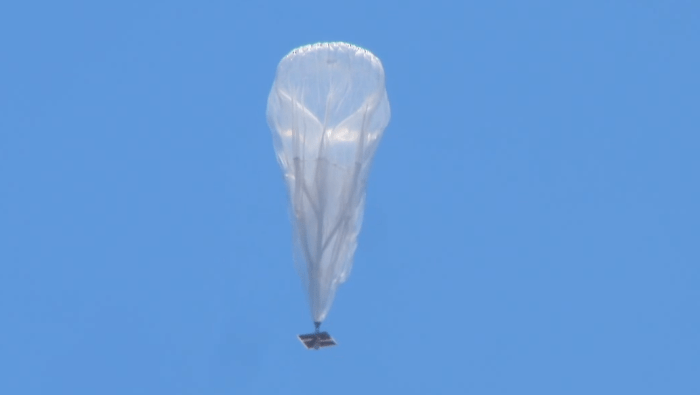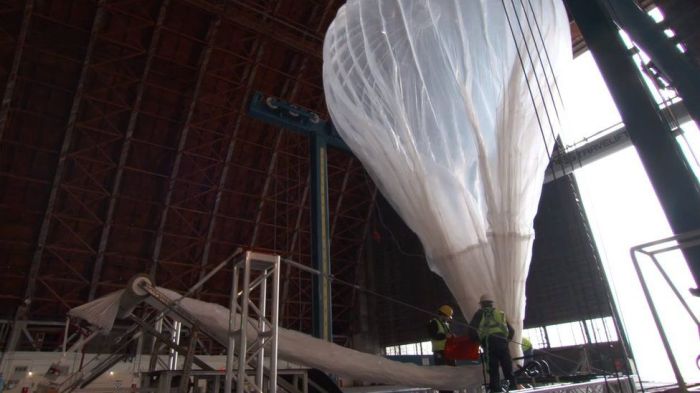Project Loon
Project Loon is an ambitious initiative by Google to provide internet access to remote and underserved areas around the world using high-altitude balloons. The project aims to bridge the digital divide and connect billions of people who lack access to reliable internet services.
Project Loon Technology
Project Loon employs a network of high-altitude balloons that float in the stratosphere, approximately 20 kilometers above the Earth’s surface. These balloons are designed to provide internet connectivity to vast areas, even in remote regions with limited or no existing infrastructure.
Balloon Design and Materials
Project Loon balloons are custom-designed and manufactured using lightweight, durable materials. Each balloon is about the size of a school bus and is filled with helium, allowing it to float in the stratosphere. The balloons are equipped with various components, including:
- Solar Panels: These panels power the balloon’s electronics and communication systems. They are designed to capture sunlight and convert it into electricity.
- Antennas: Antennas are used to transmit and receive internet signals. They are strategically placed to ensure optimal coverage and connectivity.
- Communication Equipment: The balloons carry advanced communication equipment, including radios, modems, and routers, to enable internet access.
- Sensors: Sensors are integrated into the balloons to monitor their position, altitude, and other parameters. They provide real-time data to the ground station for control and management.
Balloon Network and Connectivity
The balloons are interconnected in a network, forming a mesh network. This network allows the balloons to communicate with each other and relay internet signals to ground stations. Each balloon acts as a relay point, transmitting and receiving data from other balloons and ground stations. The balloons are constantly moving, driven by winds in the stratosphere. This movement allows them to cover large areas and provide continuous internet access.
The Size and Scope of Project Loon Balloons
Imagine a single balloon, soaring high above the Earth, capable of providing internet access to an area the size of Rhode Island. This is the remarkable feat achieved by Project Loon, Google’s ambitious initiative to bring internet connectivity to remote and underserved areas around the globe.
The Coverage Area of a Single Balloon
The area covered by a single Project Loon balloon is influenced by several factors, including altitude, wind patterns, and the design of the balloon itself.
- Altitude: Project Loon balloons operate at an altitude of approximately 20 kilometers (12.4 miles), which is significantly higher than commercial airplanes. This altitude allows the balloons to cover a larger area and avoid interference from terrestrial infrastructure.
- Wind Patterns: The balloons are designed to move with the wind, allowing them to stay in a specific geographic area for extended periods. The wind patterns at the altitude at which the balloons operate are relatively predictable, enabling Google to effectively manage their movement and coverage.
- Balloon Design: The design of the Project Loon balloons, featuring a large, reflective surface, enhances their ability to reflect sunlight and maintain a stable altitude. The balloons are also equipped with advanced technology that enables them to communicate with each other and with ground stations, ensuring seamless internet connectivity.
The Coverage Area of a Single Balloon Compared to Other Geographic Locations
The following table illustrates the area covered by a single Project Loon balloon compared to the size of various geographic locations:
| Location | Area (square kilometers) | Area covered by one Project Loon balloon (square kilometers) |
|---|---|---|
| Rhode Island | 3,140 | 3,140 |
| New York City | 1,214 | 3,140 |
| Singapore | 719 | 3,140 |
| Luxembourg | 2,586 | 3,140 |
“A single Project Loon balloon can cover an area the size of Rhode Island, providing internet access to a large population.”
The Impact of Project Loon on Connectivity: One Balloon From Project Loon Could Cover The Area Of Rhode Island
Project Loon, Google’s ambitious initiative to provide internet access to remote and underserved areas using high-altitude balloons, has the potential to revolutionize connectivity worldwide. By deploying a network of balloons that float in the stratosphere, Project Loon can deliver internet access to regions that lack traditional infrastructure, bridging the digital divide and unlocking a world of opportunities.
Economic and Social Implications of Increased Internet Connectivity
The expansion of internet access through Project Loon has profound economic and social implications for underserved communities. With increased connectivity, individuals and communities can access information, education, healthcare, and economic opportunities that were previously out of reach.
- Economic Growth: Internet access fosters entrepreneurship, e-commerce, and remote work opportunities, driving economic growth in rural areas. For example, farmers can access market information, connect with buyers, and improve their yields, while small businesses can reach wider markets and expand their operations.
- Education and Healthcare: Internet connectivity enables access to online learning platforms, telehealth services, and remote medical consultations, improving educational outcomes and healthcare access in underserved areas. For instance, students in remote villages can access online courses and resources, while patients in rural communities can receive remote medical advice and consultations.
- Social Empowerment: Internet access empowers individuals to connect with others, share information, and participate in online communities, fostering social inclusion and civic engagement. This can lead to increased awareness of local issues, community mobilization, and participation in democratic processes.
Comparison with Other Methods of Internet Access
Project Loon offers a unique approach to internet access compared to traditional methods like satellite and terrestrial networks.
- Satellite Networks: While satellite internet provides coverage to remote areas, it is often expensive and can experience latency issues due to the long distances signals have to travel. Project Loon, with its lower altitude and proximity to ground stations, offers faster speeds and potentially lower costs.
- Terrestrial Networks: Terrestrial networks, such as fiber optic cables and cellular towers, are expensive to build and maintain in remote areas with challenging terrain. Project Loon’s balloon-based infrastructure can overcome these challenges, providing connectivity to areas where traditional networks are impractical or cost-prohibitive.
Challenges and Limitations of Project Loon
Project Loon, while a revolutionary concept, faces several challenges and limitations that need to be addressed for its widespread adoption and long-term success. These challenges range from technical complexities to regulatory hurdles and environmental concerns.
Technological Challenges, One balloon from project loon could cover the area of rhode island
The technological challenges of Project Loon stem from the inherent complexities of operating high-altitude balloons in dynamic atmospheric conditions.
- Wind Conditions: The movement of balloons is heavily influenced by wind patterns, which can be unpredictable and vary significantly at different altitudes. Managing balloon trajectories and ensuring consistent connectivity requires sophisticated algorithms and real-time wind forecasting.
- Balloon Lifespan: Project Loon balloons are designed for extended operation, but their lifespan is limited by factors such as material degradation, solar radiation, and potential damage from weather events. Regular maintenance and replacement are crucial for maintaining a continuous network.
- Signal Strength: The signal strength of Project Loon’s internet connection can be affected by factors like distance from the ground station, atmospheric conditions, and the density of users. Optimizing signal strength and ensuring reliable connectivity in various terrains and weather conditions is a continuous challenge.
Regulatory Hurdles
Project Loon’s deployment and operation require navigating a complex web of regulations and obtaining necessary permissions from various countries.
- Air Traffic Control: Operating balloons in the airspace requires coordination with air traffic control authorities to ensure safe flight paths and prevent collisions with aircraft. This involves obtaining necessary permits and adhering to established regulations.
- Spectrum Allocation: Project Loon utilizes radio spectrum to provide internet connectivity. Obtaining spectrum licenses from different countries can be a complex process, involving negotiations and compliance with local regulations.
- Data Privacy and Security: Project Loon operates in a global context, raising concerns about data privacy and security. Ensuring compliance with local data protection laws and establishing robust security measures is essential for user trust and responsible operation.
Environmental Impact
Project Loon’s environmental impact is a critical concern, particularly considering the large number of balloons involved and their potential effects on the atmosphere and ecosystem.
- Balloon Debris: The potential for balloon debris falling to the ground is a concern, as it could pose a risk to wildlife or ecosystems. Google has implemented measures to minimize debris, such as using biodegradable materials and designing balloons for controlled descent.
- Atmospheric Effects: The release of gases from balloons, such as helium, could potentially contribute to greenhouse gas emissions. Minimizing these emissions and exploring alternative technologies for balloon inflation are ongoing research areas.
The Future of Project Loon
Project Loon, Google’s ambitious endeavor to provide internet access to remote areas using high-altitude balloons, has faced both successes and challenges. However, its potential to bridge the digital divide remains significant. The future of Project Loon hinges on its ability to overcome existing limitations and adapt to the evolving technological landscape.
Evolution and Adaptation
Project Loon’s future lies in its ability to evolve and adapt to address the challenges it faces. One key area for improvement is the efficiency and cost-effectiveness of the balloon system. Research and development efforts are focused on creating more durable and longer-lasting balloons, reducing operational costs, and optimizing the network infrastructure. Furthermore, Project Loon is exploring ways to integrate with existing terrestrial networks, creating a more seamless and robust connectivity experience. For instance, integrating Project Loon with cellular networks could enhance coverage in areas with weak or nonexistent signal.
Integration with Other Technologies
Project Loon has the potential to be integrated with other emerging technologies, creating a more comprehensive and impactful solution for connectivity. One promising avenue is the integration with drones, which could provide localized and on-demand connectivity in disaster relief situations or remote areas. Drones could be used to deliver internet access to specific locations, supplementing the broader coverage provided by Project Loon balloons. Similarly, Project Loon could be integrated with satellite networks, leveraging the global reach of satellites to expand its coverage and create a more resilient network. This integration could address the challenge of providing reliable connectivity in areas with limited ground infrastructure.
One balloon from project loon could cover the area of rhode island – Project Loon represents a significant leap forward in global connectivity, with the potential to bridge the digital divide and unlock new opportunities for people in underserved areas. While there are challenges to overcome, such as wind conditions and regulatory hurdles, the potential benefits of Project Loon are undeniable. As the technology continues to evolve, we can expect to see even greater advancements in connectivity, bringing the world closer together one balloon at a time.
Imagine a single balloon the size of Rhode Island, soaring high above the earth. That’s the scale of Project Loon’s ambitious goal to provide internet access to remote areas. While we’re captivated by such grand ideas, it’s the little things that often make a big difference. Like, for instance, being able to access your Yahoo Mail with a simple fingerprint scan on your Android device.
Yahoo Mail’s Android fingerprint support makes managing your emails even more convenient, just like a giant balloon bringing the internet to the world.
 Standi Techno News
Standi Techno News

